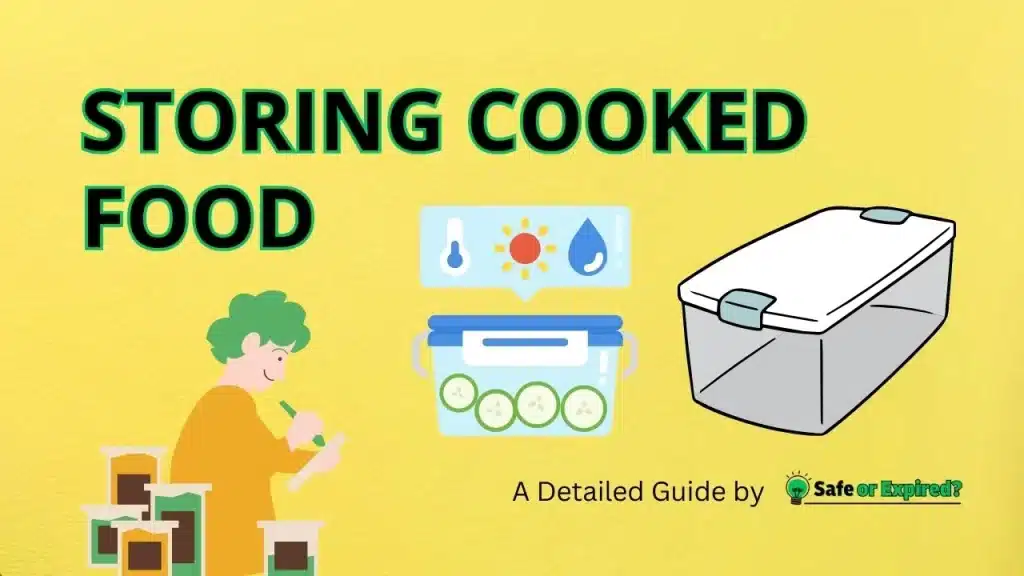Storing cooked food properly is not just about keeping it fresh; it’s essential for maintaining health and maximizing flavor. Whether you’re meal prepping for the week or saving leftovers from dinner, knowing the ins and outs of food storage can save you from spoilage and foodborne illnesses. So, continue reading.
Why is Storing Cooked Food important?
Storing cooked food properly is crucial to prevent foodborne illnesses, maintain nutritional quality, and extend shelf life. Proper storage methods like refrigeration within two hours of cooking and using airtight containers help keep food safe and tasty, reducing waste and saving money by preserving leftovers for future use.
Preventing Foodborne Illnesses
According to WHO, Storing cooked food properly is crucial to prevent foodborne illnesses. Bacteria like Salmonella, E. coli, and Listeria can thrive in improperly stored food, especially if it’s left at room temperature for too long.
By refrigerating cooked food within two hours of preparation, you dramatically reduce the risk of bacterial growth and protect yourself and your family from potential sickness.
Maintaining Nutritional Value
The way you store your food also impacts its nutritional value. Vitamins and other nutrients can degrade when exposed to air, moisture, light, or heat for extended periods. Proper storage, such as sealing food in airtight containers, helps maintain its nutrient profile.
This not only keeps the food tasting better but also ensures that you’re receiving the health benefits from the foods you eat.
Enhancing Food Safety

Effective food storage involves more than just keeping food from spoiling. It also includes taking steps to ensure it remains safe to eat. This means:
- Using clean containers
- Separating cooked and raw foods to avoid cross-contamination
- Setting your freezer and fridge to the correct temperatures (4 to 40°F ).
Always follow the best food storage and preservation practices to maintain the quality and safety of meals. Here’s a complete guide on it: Easiest Food Storage and Preservations Tips that Anyone Can Do!
Supporting Sustainable Eating Habits
Efficient food storage aligns with sustainable eating practices. How? By minimizing waste and making the most of available resources. By storing food properly, you contribute to less food spoilage and a reduction in food waste, which is beneficial for the environment.
Simplifying Meal Planning
When cooked food is stored properly, it’s easier to plan meals for the week. You can cook in bulk and store servings for later use, knowing they will remain fresh and safe to eat. This can help streamline your meal preparation process and reduce the frequency of cooking from scratch.
By understanding and implementing proper food storage techniques, you ensure the health, safety, and quality of your meals. This not only helps in minimizing waste but also supports a healthier lifestyle by maintaining the food’s integrity and nutritional value.
Reliable food safety guidelines are crucial for proper food handling. Discover the best practices from leading safety institutions in “Key Food Safety Guidelines from Top Authorities.”
How to Store Cooked Foods? 6 Best Ways
To store cooked foods effectively, cool them rapidly before refrigerating, use airtight containers to maintain freshness, and label each container with the date stored. Keep your refrigerator below 40°F and regularly check and clean it to ensure the best environment for preserving your food safely.
Cooling & Refrigeration
Proper cooling and refrigeration are vital to maintaining the safety and quality of cooked foods. USDA recommends that cooked food should not sit out at room temperature for more than two hours as usual. However, if the temperature is above 90°F (32°C), then the limit is one hour. This is because temperatures between 40°F (4.4°C) and 140°F (60°C) provide the perfect environment for bacteria to multiply rapidly.
To safely cool cooked foods, divide large amounts into smaller portions. Place these portions in shallow containers to allow them to cool more quickly and evenly. This technique prevents the bacteria from growing.
According to a study published in IJCMAS, the food should be refrigerated promptly once it is properly cooled. The refrigerator should be set to 40°F (4.4°C) or below, a safe temperature that slows bacterial growth. It’s important to cover the food in airtight containers or wrap it securely to maintain quality.
Example: Consider a large pot of chili. Instead of refrigerating the entire pot, it’s more effective to transfer the chili into smaller containers. These containers should then be placed in the refrigerator to cool rapidly and safely.
Moreover, according to the Centers for Disease Control and Prevention (CDC), improper refrigeration contributes to nearly 40% of foodborne illness outbreaks. Ensuring that cooked foods are rapidly cooled and stored at the correct temperature can significantly reduce the risk of foodborne diseases.
There are many myths about how food should be stored and maintained. Break down these myths and learn what really works by reading “Debunking Common Food Storage Myths: What Not to Do.”
Airtight Containers
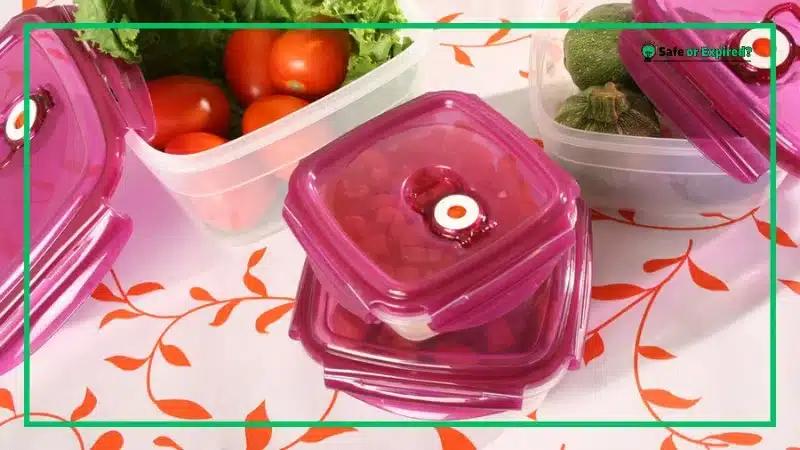
Airtight containers can preserve the freshness and safety of cooked foods. By sealing out air, these containers help prevent the growth of bacteria and keep contaminants at bay. This practice not only extends the shelf life of food but also helps maintain its flavor, texture, and nutritional quality.
You should focus on choosing the right containers. Select containers that are made from safe, non-toxic materials such as glass or BPA-free plastics. These materials ensure that no harmful chemicals leach into the food. Containers should also be sturdy, microwave-safe, and dishwasher-safe for convenience and hygiene.
Here are some examples and tips:
| Container Type | Uses | Benefits |
|---|---|---|
| Glass Containers | Acidic foods like tomato sauces | Non-reactive, does not absorb odors |
| BPA-free Plastic | General food storage | Safe, lightweight, does not leach chemicals |
| Vacuum-Sealed Bags | Freezing meals, leftovers | Extends freshness, prevents freezer burn |
Research shows that properly sealed food can last up to five times longer than the meal stored in containers with loose-fitting lids or plastic wrap. A National Institutes of Health (NIH) study highlights the importance of reducing oxygen exposure to maintain the antioxidant properties of food.
Labeling
Labeling is a straightforward yet crucial step in food storage that often goes overlooked. Proper labeling involves marking containers with the contents and the date of storage. This practice helps manage your inventory of cooked foods, ensuring that you use items while they are still of the best quality and safe to eat.
A study from the Food Safety and Inspection Service (FSIS) suggests that labeling can help reduce food waste by as much as 30% in household settings. By clearly marking the storage dates, households are better able to manage their food consumption and minimize the risk of eating degraded food.
Here’s how to Label Effectively:
- Use Waterproof Labels: Opt for labels that can withstand moisture and cold temperatures, especially for items that will be stored in the freezer.
- Include Dates and Contents: Always write the date the food was cooked and a brief description of the dish. This is especially useful for distinguishing between similar-looking items like soups or sauces.
- Implement a FIFO System: Use the “First In, First Out” system by placing newer items behind the older ones so you use the oldest items first. This practice is commonly used in professional kitchens to maintain freshness and quality.
Here’s an example. If you prepare a batch of spaghetti sauce on April 1st, label the container as “Spaghetti Sauce – April 1.” When you prepare another batch later, label it with the new date. This system helps ensure you do not consume food that has been stored for too long.
Thawing and Reheating
Properly thawing and reheating stored cooked food is as crucial as the initial storage process, ensuring that the food is safe to eat and retains its quality. Mishandling during these stages can lead to foodborne illnesses due to uneven cooking or the proliferation of bacteria.
Thawing Safely:
- Refrigerator Thawing: The safest way to thaw frozen food is in the refrigerator. This method ensures that your meal remains at a safe temperature (below 40°F or 4°C) throughout the thawing process. Plan ahead, as this method can take several hours or even a full day for large items like a frozen turkey.
- Cold Water Thawing: For a quicker method, you can thaw food in a leak-proof bag submerged in cold water, changing the water every 30 minutes to ensure it remains cold.
- Microwave Thawing: If you’re in a hurry, using a microwave is the fastest option. However, this method can cause uneven thawing and should be followed immediately by cooking.
Reheating Guidelines:
- Temperature: Always reheat food to at least 166°F (74°C), and use a food thermometer to confirm. This temperature is high enough to kill any bacteria that may have grown during storage.
- Even Heating: Stir food occasionally while reheating to ensure even heating. You should especially do this when using a microwave. Cover dishes to retain moisture and provide even heat distribution.
- Avoid Overheating: Reheat only the amount of food you plan to eat to avoid quality degradation. Repeated reheating can make food dry and increase the likelihood of bacterial growth.
Here’s an example. When reheating a container of chili stored in the freezer, transfer it to the refrigerator the day before you plan to eat it. Once thawed, reheat it on the stove or in a microwave until it reaches 165°F, stirring occasionally to ensure it heats evenly.

Regular Checks
Regular checks are essential to ensure the safety and quality of your stored cooked foods. This involves:
- Routinely inspecting your refrigerator and pantry to assess the items’ condition.
- Ensuring that the storage environments remain optimal for food preservation.
Here’s how to keep up with regular checks.
- Check Dates: Regularly review the dates on your food labels to ensure nothing is kept beyond its safe consumption period. This is crucial for preventing food spoilage and avoiding the risk of foodborne illnesses.
- Inspect for Spoilage: Look for signs of spoilage, such as mold, unpleasant odors, fungi, or unusual textures. Discard any food that shows these signs, as it could be unsafe to eat.
Keep it Clean
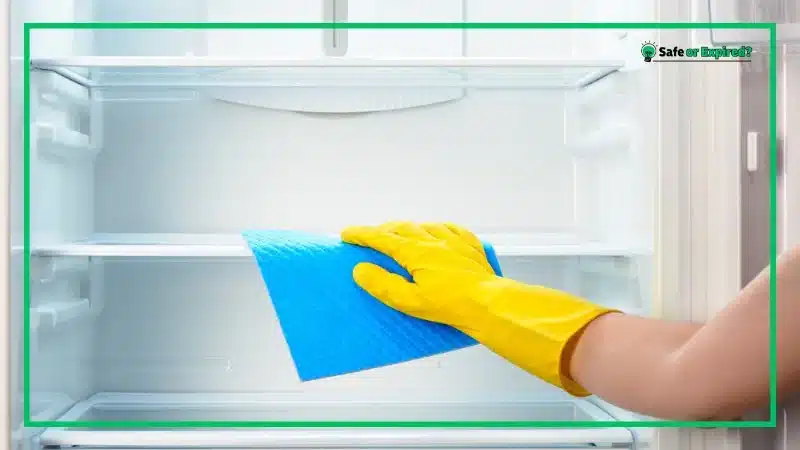
Maintaining cleanliness is critical in food storage areas to prevent contamination and ensure a safe environment for storing cooked foods. This means regular cleaning and sanitation of refrigerators, freezers, pantries, and containers.
Top cleaning practices are:
- Clean Spills Immediately: Promptly cleaning spills in your refrigerator and pantry reduces the risk of cross-contamination.
- Deep Clean Regularly: Schedule regular cleaning sessions for your refrigerator and pantry. Remove all items, wipe down the surfaces with a food-safe cleaner, and wash all removable parts like shelves and bins.
- Sanitize Containers: Before storing any food, ensure that containers are thoroughly washed and sanitized. This prevents the transfer of bacteria from previous contents.
Are There Foods That Should Not Be Stored After Cooking?
Some foods should not be stored after cooking due to safety and quality concerns. These include seafood, fried foods, and egg-based sauces. These items can spoil quickly or lose texture and flavor, making them less enjoyable and potentially unsafe to consume if not eaten immediately after preparation.
Seafood
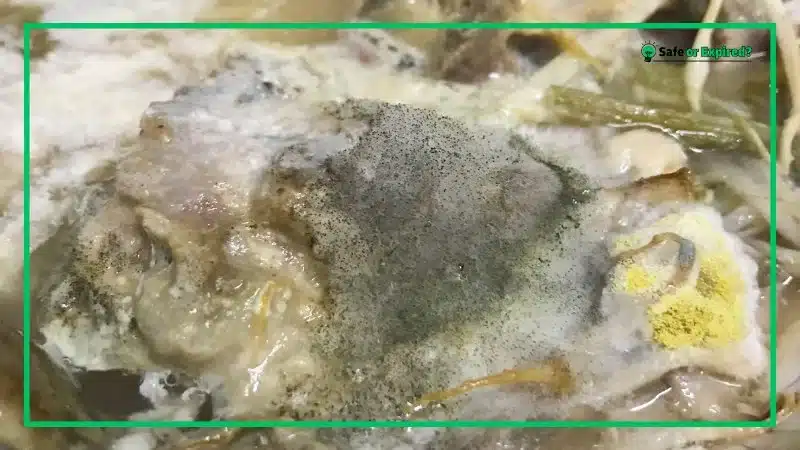
Cooked seafood should ideally be consumed immediately. If storage is necessary, it shouldn’t exceed two days in the refrigerator. The risk of bacterial growth is significant due to the delicate nature of fish and shellfish. This will ruin the dish.
Check out this picture of spoiled seafood:
Here’s an interesting article on “How long do canned tuna last after the expiration date?” if you want to explore the shelf life of Tuna.
Fried Foods
While not necessarily unsafe, the quality of fried foods deteriorates rapidly after cooking. Foods like french fries and fried chicken lose their crispiness and become soggy, which can be unappealing.
Egg-based Sauces and Dishes
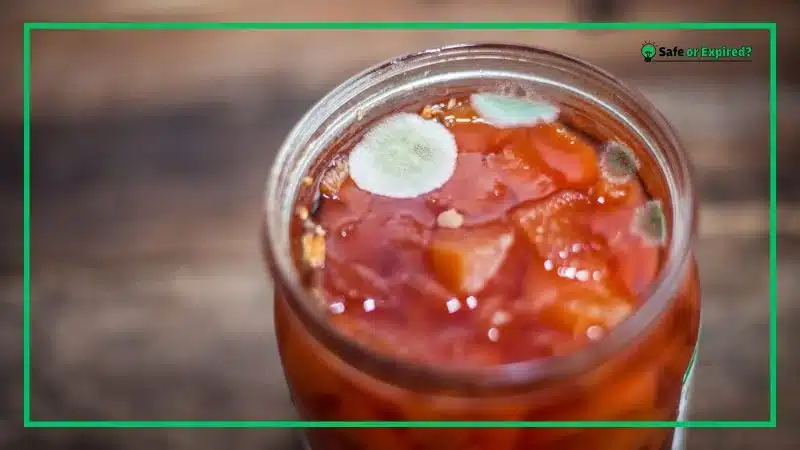
These are particularly prone to separating or spoiling quickly. Dishes such as hollandaise sauce or freshly made custards can harbor bacteria if not stored at the right temperatures immediately after cooking. Heres what a spoiled sauce looks like:
It’s important to understand these limitations to ensure that you enjoy your meals not only at their tastiest but also at their safest.
It’s helpful to understand how food safety is maintained around the world. Gain insights from “How Global Food Safety Authorities Guard Our Food.”
How Can You Tell if Stored Cooked Food Has Gone Bad?
You can tell if stored cooked food has gone bad by checking for signs like mold growth, unpleasant odors, discoloration, and changes in texture. If the food smells off, feels slimy, or shows visible mold, it should be discarded immediately to avoid the risk of foodborne illness.
Visual Changes
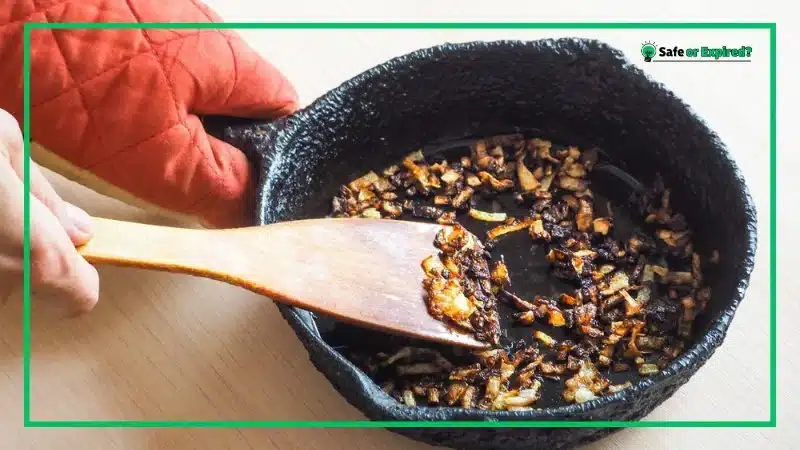
One of the first signs that stored, cooked food has gone bad is visual evidence of mold growth. Mold can appear in different colors, including white, green, or black, and often presents a fuzzy texture on the surface of the food. Additionally, discoloration is another visual cue.
Foods that look darker or have faded compared to when they were initially stored may have begun to spoil. These changes are often accompanied by a separation of liquids and an overall unappealing appearance.
Odor Changes
The smell of the food is a strong indicator of its quality. If you notice an off or foul odor emanating from the food, it’s a clear sign that it has spoiled. Cooked foods that have gone bad will often develop sour, rancid, or otherwise unpleasant smells that are distinctly different from their fresh, cooked state. Trust your nose—if something smells wrong, it’s best not to take the risk.
Texture Changes
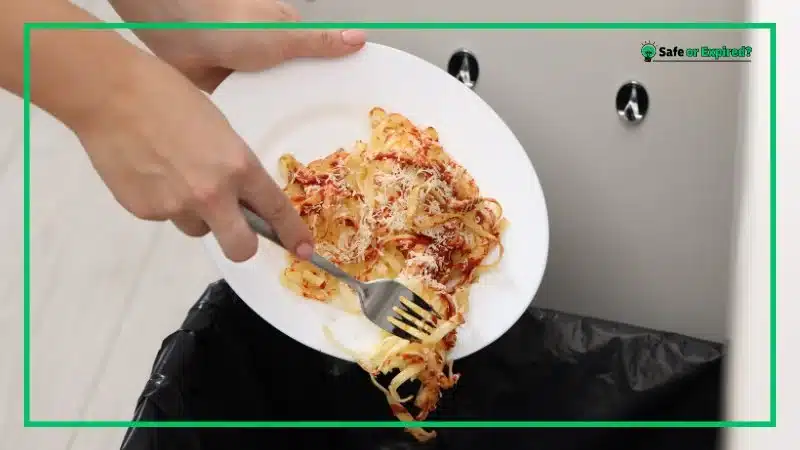
According to the Australian Institute of Food Safety, the food’s texture can also change significantly when it has gone bad. Foods that were once firm or crisp may become slimy or overly soft. The texture change is particularly noticeable in protein items like cooked meats or seafood, which become tacky or sticky as they spoil.
This tactile change is a result of bacterial activity, which breaks down the food’s structure and compromises its integrity.
Taste Changes
Although it’s best not to taste food that shows other signs of spoilage, a change in flavor can also indicate that food has gone bad. Spoiled foods often develop a sour, bitter, or otherwise abnormal taste. If you inadvertently taste food that has changed in flavor, spit it out immediately and discard the remainder of the dish.
By being aware of these changes—visual, olfactory, textural, and taste—you can effectively judge whether your stored cooked food is still safe to consume.
Always remember that good storage practices are key to prolonging the life of your cooked foods and maintaining their safety and quality.
Knowing why food spoils is key to preventing it. Dive into the details with “Identifying the Factors That Lead to Food Spoilage” to learn more about how to keep your food fresh longer.
Conclusion
Proper storage of cooked food is crucial for both safety and quality. Here are the key takeaways from our discussion:
- Temperature Control: Always keep your refrigerator below 40°F. If you use a freezer, then note that the recommended temperature is 0°F.
- Container Use: Opt for airtight containers to preserve freshness and prevent contamination.
- Regular Checks: Regularly inspect your stored food for any spoilage signs such as mold.
- Safe Reheating: Ensure all leftovers are reheated to at least 165°F to kill any potentially harmful bacteria.
- Immediate Action: Discard any food that shows signs of spoilage without tasting it to avoid health risks.
Following these guidelines will help you enjoy your cooked meals safely and deliciously every time. That’s all!

